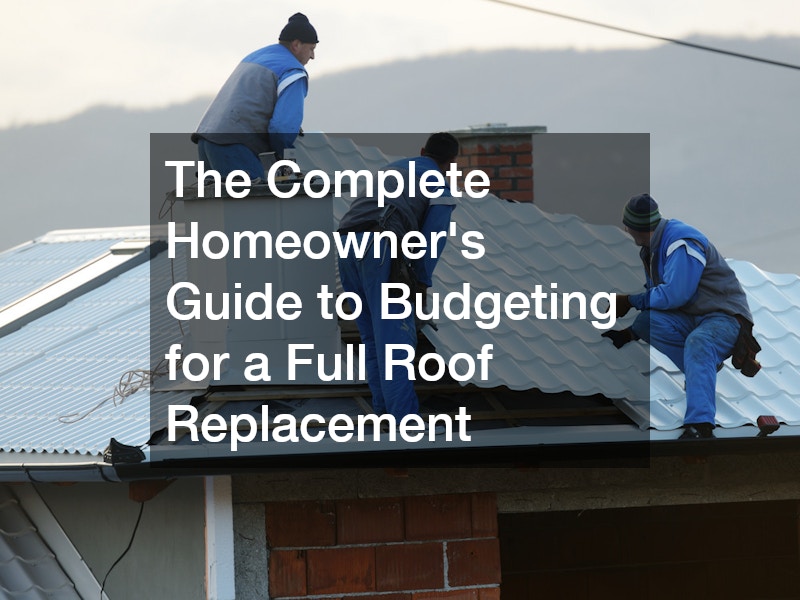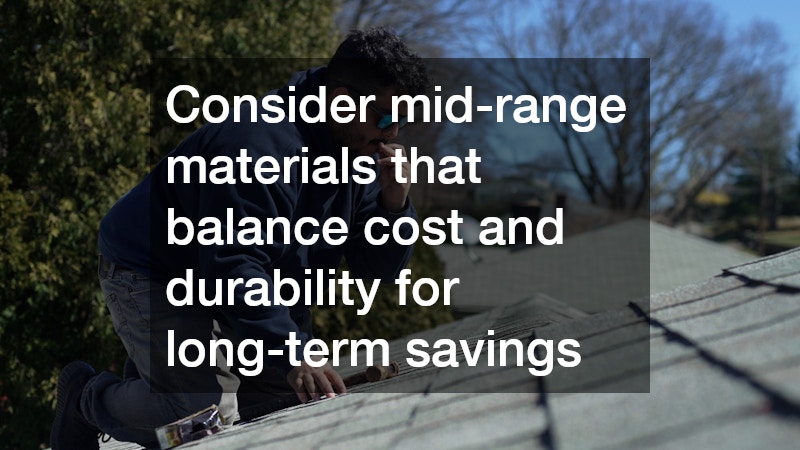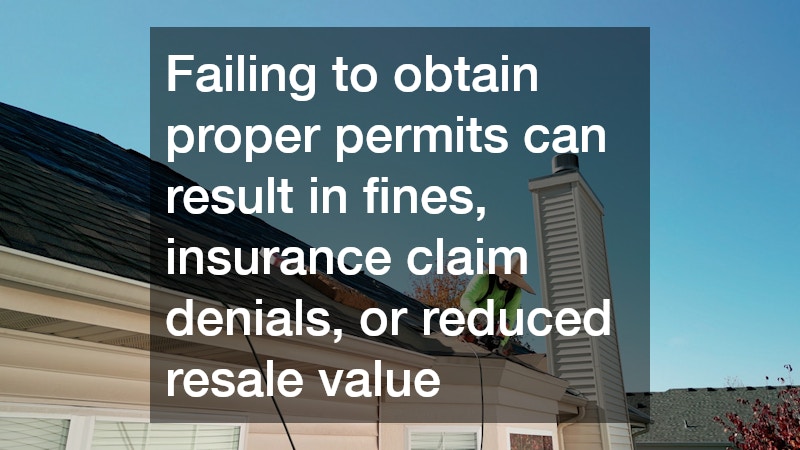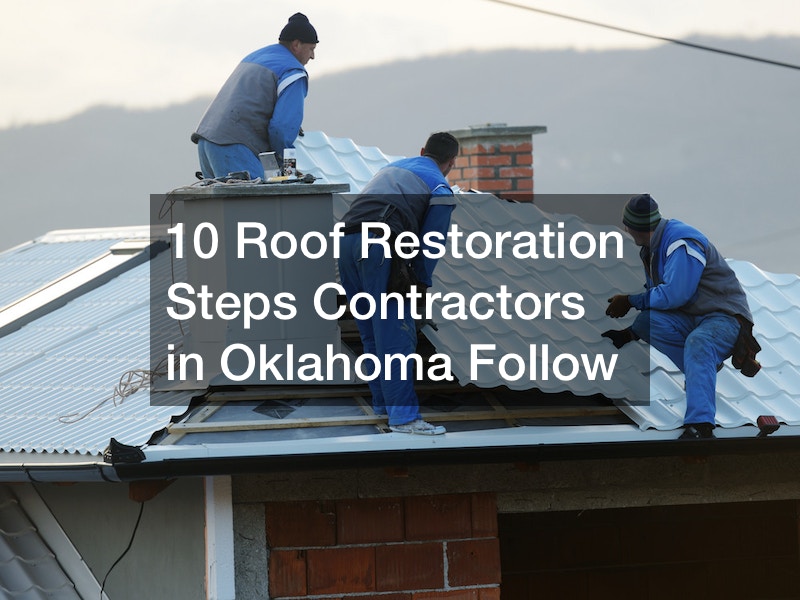Key Takeaways
-
Budget comprehensively for materials, labor, permits, hidden costs, and financing.
-
Maintain a contingency fund for unexpected repairs or upgrades.
-
Hire licensed, insured, and reputable roofers for quality work.
-
Track invoices, payments, and estimates to prevent overspending.
-
Consider energy-efficient or durable materials to maximize long-term savings.
-
Accurate planning reduces stress, prevents project delays, and ensures a safe, lasting roof replacement.

Replacing a roof is one of the most significant investments for homeowners. A well-maintained roof protects your home from water damage, weather-related deterioration, and structural issues. Beyond protection, a new roof improves energy efficiency, increases curb appeal, and adds value when it comes time to sell your property. However, without careful budgeting, homeowners risk overspending, encountering project delays, or choosing subpar materials or installation services.
This comprehensive guide walks you through budgeting for a full roof replacement with a roofer, breaking down costs for materials, labor, permits, unexpected expenses, and financing. It also offers practical tips for homeowners on planning, hiring certified roofers, and maximizing the value of your investment.
Understanding the Scope of a Full Roof Replacement
Before budgeting, homeowners must distinguish between minor repairs, partial replacements, and full roof replacements. While patching a few damaged shingles may suffice for small leaks, a full replacement is often necessary when multiple areas are compromised or the roof has reached the end of its useful life.
Key factors affecting the scope of replacement:
-
Roof age and condition: Roofs over 20–25 years old, or with curling, missing, or cracked shingles, usually require full replacement.
-
Structural integrity: Damaged decking, weak trusses, or water-damaged underlayment can necessitate a complete replacement rather than a repair.
-
Complexity of design: Roofs with multiple angles, dormers, skylights, chimneys, or a steep pitch require more labor and precise installation by experienced roofers.
-
Material selection: Different roofing materials can affect the ease of replacement; heavier materials like tile or slate may require additional structural support.
Professional roofers should conduct a thorough inspection to assess hidden damage. This evaluation ensures accurate budgeting and prevents unforeseen costs that arise from incomplete inspections.
Material Costs
Material selection often represents the largest portion of the replacement budget. The right choice balances durability, cost, aesthetics, and climate considerations.
Common roofing materials and price ranges per square foot:
-
Asphalt shingles ($3–$5): Affordable, widely available, lifespan 20–30 years, moderate durability. Ideal for most residential properties.
-
Metal roofing ($7–$12): Highly durable, energy-efficient, lifespan 40–70 years. Lightweight and resistant to wind and fire.
-
Tile or slate ($10–$25): Premium, extremely durable, 50+ year lifespan. Heavy and requires reinforced roofing structure.
-
Synthetic/composite shingles ($6–$12): Mimic high-end materials with a lower cost, long lifespan, and minimal maintenance.
Factors influencing material costs:
-
Roof slope and design complexity: Steeper roofs or multi-faceted designs require more material and labor due to waste and cutting.
-
Quality and brand: Higher-quality shingles or metal panels increase upfront costs but can extend roof lifespan and reduce maintenance.
-
Overage and waste: Always purchase 10–15% extra to account for cutting, mistakes, and future repairs.
Tips for saving on materials:
-
Purchase in bulk or during seasonal sales for discounts.
-
Compare multiple suppliers to ensure competitive pricing.
-
Consider mid-range materials that balance cost and durability for long-term savings.
Example cost breakdown for a 2,000 sq. ft. roof (asphalt shingles):
| Item | Cost Range | Notes |
|---|---|---|
| Shingles | $6,000–$10,000 | Includes 10–15% overage |
| Underlayment & flashing | $1,200–$2,000 | Protects decking and prevents leaks |
| Ventilation & drip edges | $500–$1,000 | Ensures proper airflow and moisture control |
| Total materials | $7,700–$13,000 | Approximate range |
Roofers can provide guidance on suitable materials for your climate and home design, ensuring your investment lasts.

Labor Costs
Labor is typically 30–50% of the total replacement cost. Professional roofers provide expertise, safety, and guarantee adherence to manufacturer guidelines and local building codes.
Factors affecting labor costs:
-
Roof complexity and slope: Steep roofs or intricate designs increase installation time.
-
Removal of old roofing: Tear-off and disposal of existing shingles or tiles adds cost.
-
Local labor rates: Urban areas often have higher rates than rural locations.
-
Crew experience: Certified, insured, and experienced roofers charge more but reduce the risk of errors.
-
Safety equipment: Scaffolding, harnesses, and fall protection may add $500–$1,500.
Tips for hiring roofers efficiently:
-
Obtain at least three written quotes and compare them carefully.
-
Check licensing, insurance, and references for credibility.
-
Discuss warranties for both materials and labor before hiring.
-
Avoid hiring solely based on price—cheap labor can lead to long-term issues.
Sample labor estimate for a 2,000 sq. ft. roof: $4,000–$8,000 depending on complexity and location.
Permits and Regulatory Fees
Many municipalities require permits for full roof replacements. Costs and regulations vary by location and material type.
Typical costs:
-
Building permit fees: $100–$500
-
Inspection fees: May be additional, depending on your local building authority
-
Compliance upgrades: Older homes may require updated flashing, underlayment, or ventilation
Tips for budgeting for permits:
-
Contact your local building department early to clarify requirements.
-
Include permit fees in your total budget to avoid surprises.
-
Some roofers handle permit applications; confirm if it’s included in labor costs.
Failing to obtain proper permits can result in fines, insurance claim denials, or reduced resale value.

Hidden and Additional Costs
Even well-planned projects can uncover unexpected expenses. Budgeting for these avoids delays and financial strain.
Common hidden costs:
-
Damaged decking or substructure discovered during tear-off
-
Upgrades for ventilation and insulation to meet modern standards
-
Flashing or gutter replacement to prevent water infiltration
-
Debris removal and disposal fees
-
Storm or hail damage repairs uncovered during inspection
Tips to manage hidden costs:
-
Include a 10–15% contingency fund in your budget.
-
Maintain open communication with your roofers to review unexpected findings.
-
Document additional costs and adjust your financial plan accordingly.
Financing Options for a Roof Replacement
Roof replacements are a major expense, and financing options help homeowners manage costs without compromising quality.
Available financing options:
-
Home equity loans or HELOCs: Borrow against your home’s value, often at lower interest rates than personal loans.
-
Personal loans: Short-term options with higher interest rates, suitable for smaller projects.
-
Contractor financing programs: Many roofing companies offer flexible payment plans, sometimes with 0% interest for a limited period.
-
Insurance claims: If roof damage is storm-related, insurance may cover part or all of the replacement. Proper documentation and professional inspection reports are essential for claims approval.
Tips for choosing financing:
-
Compare multiple lenders or contractor financing plans.
-
Factor in interest, repayment terms, and total cost.
-
Plan monthly payments realistically within your household budget.
Planning Your Roof Replacement Budget
Creating a step-by-step budget ensures no expenses are overlooked and allows for smoother project execution.
Budgeting steps:
-
Estimate material costs based on roof size and selected material.
-
Estimate labor costs including tear-off and disposal.
-
Include permits, inspections, and compliance fees.
-
Add a contingency fund for unforeseen issues.
-
Factor in financing costs, including loan interest or deductibles.
Sample budget for a 2,000–2,500 sq. ft. roof:
| Expense | Estimated Cost |
|---|---|
| Materials | $7,700–$13,000 |
| Labor | $4,000–$8,000 |
| Permits & inspections | $200–$500 |
| Contingency | $1,200–$2,500 |
| Total Estimated Budget | $13,100–$24,000 |
Roofers can assist with detailed estimates and advice on realistic budgeting.
Maximizing Value Without Overspending
You can increase the long-term value of your roof while managing costs by focusing on efficiency and quality.
Tips for value optimization:
-
Choose durable materials to reduce future maintenance costs.
-
Schedule replacement during off-season for potential discounts.
-
Consider energy-efficient upgrades, such as reflective shingles or solar-ready roofs, to reduce utility bills.
-
Combine roofing with gutter replacement, insulation upgrades, or minor exterior improvements for bundled discounts.
-
Hire certified, insured roofers to guarantee professional installation and compliance with warranties.
Common Mistakes to Avoid
Even seasoned homeowners can make costly mistakes if they don’t plan carefully.
Avoid these errors:
-
Underestimating labor or material costs
-
Forgetting permit fees or code requirements
-
Failing to set aside a contingency fund
-
Choosing roofers solely based on price
-
Neglecting proper documentation of invoices, payments, and project milestones
Proper planning and adherence to best practices ensure your roof replacement is completed on time and within budget.




